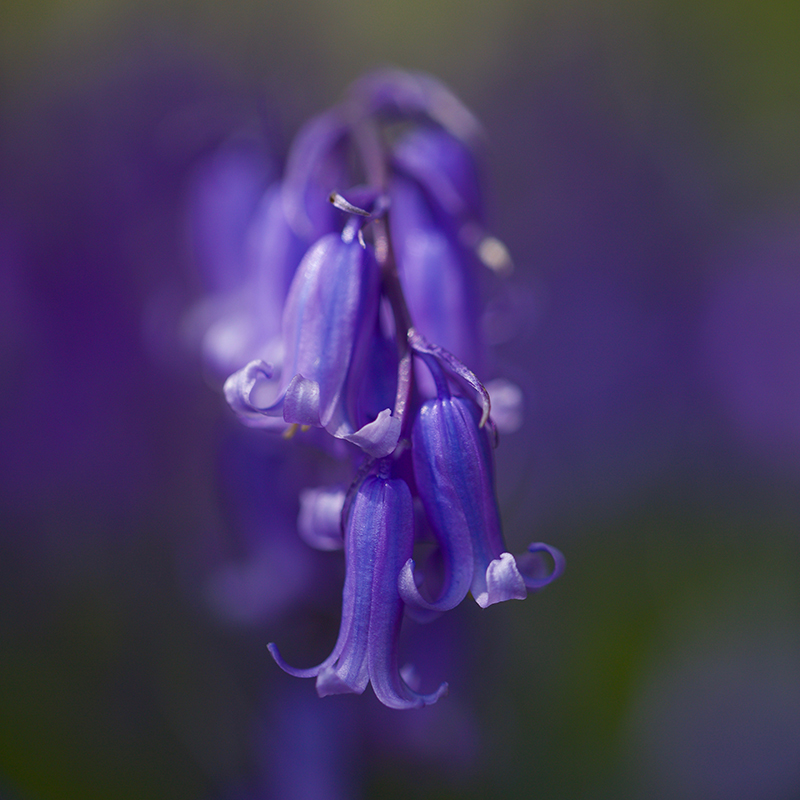
April is here; there are still things to do in the garden but this is also a fantastic time of year to witness the transformation of Britain’s greatest woodlands. The trees have not yet come into full leaf; the sun flows down to the woodland floor and millions of green shoots are growing and stretching upwards towards the sky. Then, like a magical fairytale, the woodland floor has become an ocean of intense blue … one of Britain’s best-loved flowers is back for another year!
The common Bluebell, (Hyacinthoides non-scripta) a sweetly scented bell-shaped flower, nods downward, creating a botanical display only found in northern Europe. The most amazing fact of this springtime vision is that on this small, but great island; Britain is home to more than half of the world’s population of bluebell. Stepping foot into a bluebell wood is something rather special; the pure blue gives you a sense of peace and serenity and it’s a spiritual moment in the annual calendar – one of nature’s stunning spectacles.
You can find bluebells in Britain’s broadleaf woodlands, on the edges of fields and under hedgerows. This mass of early flowers is a haven for bees, hoverflies, butterflies and other insects; like a supermarket’s shelves stacked to the brim with nectar.
When bluebells are found with other combinations of species, this indicates an Ancient Woodland. In the Bronze Age, the sap of the bluebell was used as a glue to set feathers onto their arrows, a process known as fletching. We need to do all that we can to keep this annual spectacle happening. Bluebells are a protected species as there are numerous threats to this flower. People pick the flowers illegally and dig up the bulbs. They are also threatened by the Spanish bluebell (Hyacinthoides hispanica) which is prone to cross breeding with our native bluebell to produce Hybrid bluebells (Hyacinthoides x massartiana). These are vigorous and hardy, pushing out our original native bluebell. There are many sites across the UK where you can visit a Bluebell wood, so find out where they are and help support this truly amazing flower and the woodlands in which they appear.
Other jobs still to do:
• Protect fruit blossom from late frosts
• Sow wild flower seeds and hardy annuals outside
• Plant up hanging baskets
• Deadhead daffodil and tulip flowers
• Hoe borders
• Weed and feed lawns (April is the best month to apply weed killer)
• Plant chitted potatoes outdoors
• Thin out carrot seedlings
• Sow parsnips, cabbages and other vegetable seeds which can be sown directly into the soil